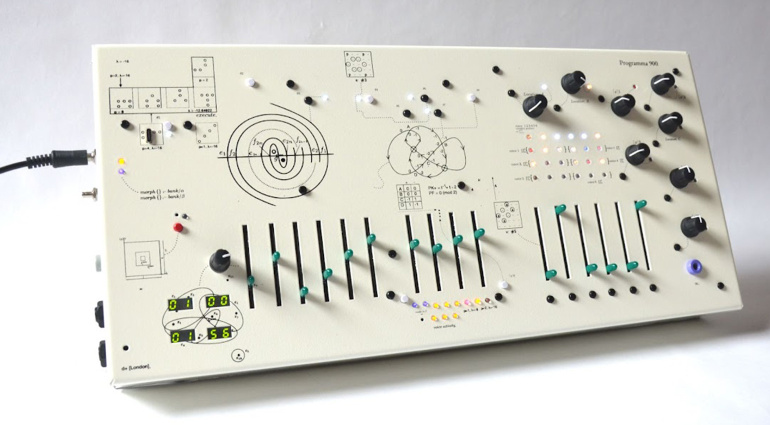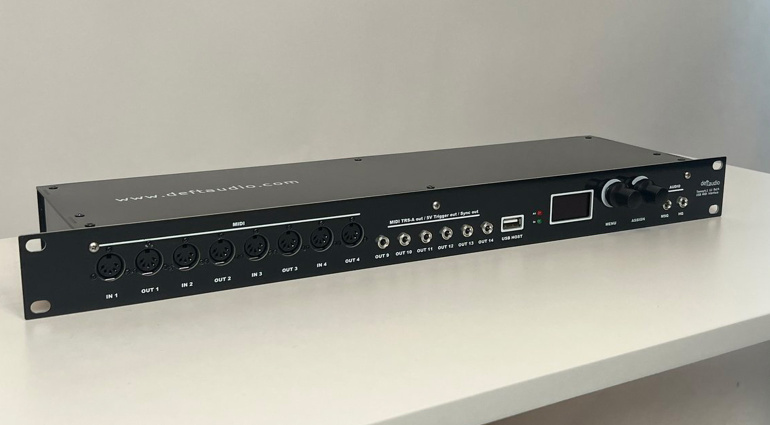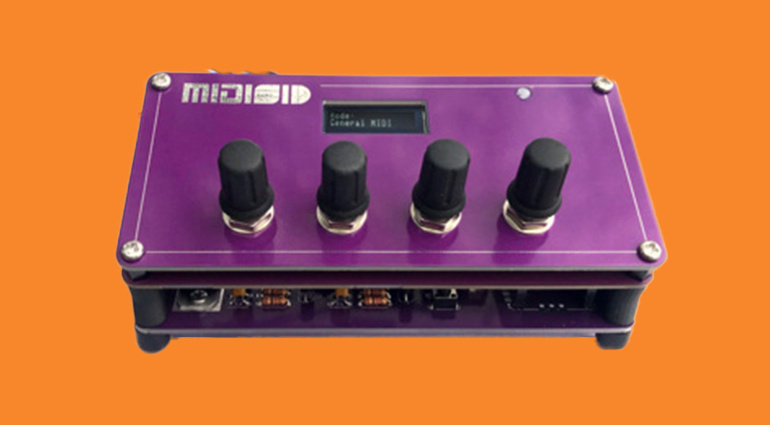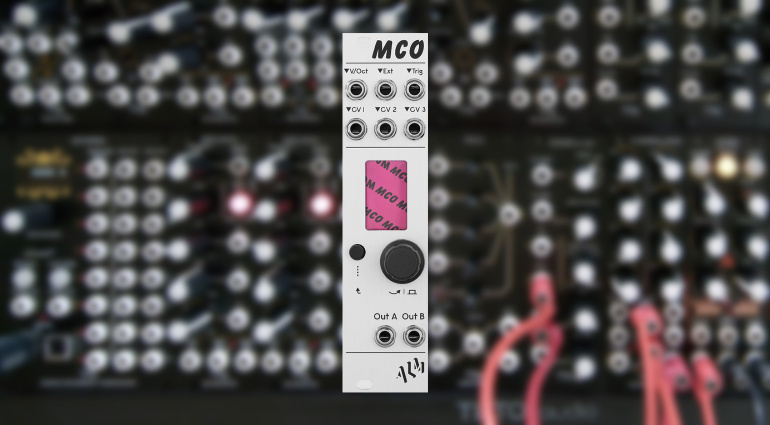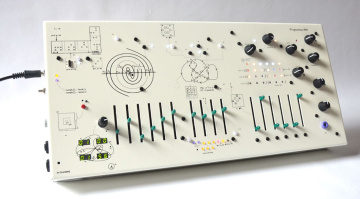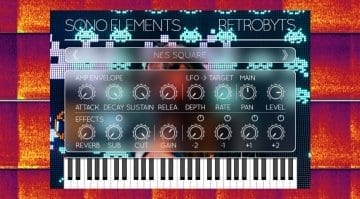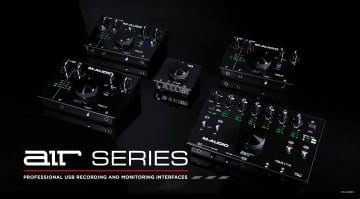Synth Journal: Versatile Teensy-Based MIDI Interface and Polytonal Harmonic Music Composer
Plus a giant D-Beam and two SIDs in a box
DeftAudio release a versatile MIDI interface in both pre-built and kit form, plus we check out other synth stories that may have fallen through the cracks!
A MIDI interface is an almost essential part of any studio, and there are many different ones available to suit a variety of needs. But in this week’s Synth Journal, we discover a new, open-source MIDI interface that delivers something different but ultimately very useful.
Table of Contents
DeftAudio Teensy 1U 8×14 Audio & MIDI Interface
You may have heard of DeftAudio before. Maybe it was from their involvement with the fantastic LUMA-1 project, the beautiful, Roger Linn ‘approved’ Linn LM-1 recreation. Or maybe from their restoration of Brad Fiedel’s two Series III Fairlight CMI’s used on Terminator 2’s soundtrack.
Either way, DeftAudio, aka Andrei Kudryavtsev, has come up with a rather brilliant MIDI interface that offers a very useful and powerful level of connectivity and routing. Featuring 8×8 traditional 5-pin MIDI DIN ins and outs, it also features six MIDI TRS outs that can also be configured as Trigger Outs or Sync Outs with variable resolution!
There’s also USB MIDI, an OLED screen, and this predominantly MIDI interface can even act as a basic 2×2 audio interface! The audio outputs can be used to send both high and mid-quality audio, the latter of which can be used to send analogue triggers to compatible equipment.
Powered via USB or a separate 9-12V PSU for more demanding connection setups, it is all housed in a 1U unit, powered by a Teensy 4.1 board (600MHz, ARM Cortex-M7) and comes in either kit or pre-built form. The MIDI interface code and hardware schematics are fully open source, so you are free to hack it and come up with your own enhancements!

Andrei is a fantastically clever guy. He’s also one of the nicest people you’re ever likely to meet, and he continues to innovate with this new MIDI interface, being just another great idea of his. You can order the MIDI interface PCB alone, a complete kit with or without a front panel, a full kit or a fully assembled unit. A fully assembled MIDI interface sells for $250.00 USD, which for this level of functionality is an absolute steal.
Visit DeftAudio’s Tindie store for all the details!
Destiny Plus Programma 900 2.0 Harmonic Musical Computer
I’m not going to lie. This thing has me scratching my head. Not in a negative way, but simply because I’m not entirely sure about what it does and how it does it! Programma 900 is a harmonic musical computer that is built on FPGA and ARM Cortex technology.
It features 6 polytonal voices, each of which has odd and even harmonics, harmonic partials, harmonic tilt and fundamental frequency control. They tell me that each individual voice can be multiplied by four quadrants and that it has 32 complex gestural CV buffers which allow for six minute recording windows for all 32 modulation destinations and voice envelopes!
Still with me? I lost me at polytonal voices! Well, I will let you peruse their website for more baffling explanations of what Programma is and does. There’s also a macOS software application that opens up extra functionality on the hardware.
I’m not even sure that if I were to sit down with the developers and have a one-to-one demo, I’d have any clearer idea about what it does and how it does it, but the sounds it produces are very compelling, if maybe not up everyone’s street.
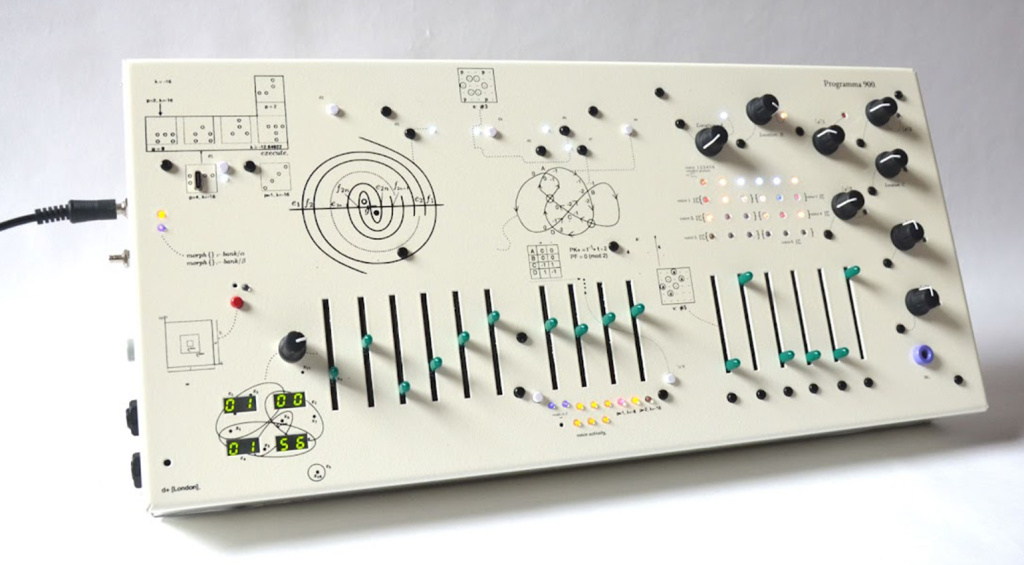
What I do hope is that I haven’t come across as dismissive of the Programma 900 2.0 in any way. I adore originality and seeing people push the boundaries of how we synthesize sound, so I doff my cap to the Destiny Plus team.
If you can come up with a more layman’s way of explaining this, do let me know in the comments. In the meantime, you can check it out at the Destiny Plus website here, although there are no details on price or availability yet.
Skapa Sound AIR Infrared Proximity Controller
Since the dawn of the Theremin, we’ve been mildly obsessed with controlling sounds by waving our hands around in thin air! Roland capitalised on this with their infamous D-Beam, and there have been numerous attempts at doing similar things over the years.

Skapa Sound’s AIR aims to bring similar functionality in a beautifully stylish form factor that has been designed to be simple to use. It features a built-in LED meter that tells you your parameter level based on the position of your hand (assuming you’re using your hand!), and you can lock that position in with a simple hand gesture.
Designed to be compatible with both MIDI and CV, this will find its way into both studio and live setups and is powered via USB-C. At this moment, the Skapa Sound AIR is in development, with more details, including price and availability, coming soon.
You can check out the Skapa Sound AIR over at their website here.
PeacockMedia MIDISID ‘Morpheus’
As an 80s teen, the sound of the Commodore 64’s SID chip is forever burned into my brain. Not only did it soundtrack all my favourite video games at home, but it was also my first synthesizer. I used a program called Electrosound to both sequence and synthesize the heck out of that SID chip.
Now, over 40 years later, the SID chip still has a large and fervent fan base, one of whom is Sheila Dixon, aka PeacockMedia. Sheila has been building and playing SID-based instruments for some time now. I first encountered her at one of the Synthesized events at Cambridge’s Centre for Computing History.
Obviously, the original MOS6581 SID chip is no longer made, but modern recreations exist, and the MIDISID uses two Kung Fu SIDs, an open-source, firmware-based emulator of the original hardware. These give you six voices to play with, and each of those has the same four waveforms, envelope and filter as the OG SID.
Sheila’s been building these for some time now, and a new version, codenamed Morpheus, has just been announced. It has a larger screen, a new menu system, a duophonic mode, a physical stereo/mono switch, USB-C and those aforementiond Kung Fu SIDs that replace the previous SwinSID nanos.

Each MIDISID is handmade, fully tested and comes with custom firmware built specifically for the Morpheus project. You can buy one here at the PeacockMedia Etsy store for just under £140 (currently sold out)
ALM/BusyCircuits MCO Mk.II Compact Multi Synth Voice
It seems the 1990s are the new 1980s, or something like that. We are seeing increasing numbers of instruments whose main aim is to resurrect the sounds of that decade and the MCO Mk.II does just that, unashamedly so.
Billed as a highly versatile, digital VCO and voice module, it crams quite a bit into its 6HP form factor. There are 8 voice programs that cover additive, wavetable, virtual analog, FM, SID, vocoder, formant and, essential for any 90s homage, a JP-8000 inspired voice.
There’s a surprisingly clear and detailed colour screen, and it has built-in envelopes and LFOs for modulation purposes, with all voices supporting up to four-voice chords and dual outputs. It comes with a bunch of factory presets with space for you to store your own creations.

There are four freely assignable outputs and support for Axon expanders to deliver up to 8 assignable CV inputs. There’s even a virtualised VCV Rack software module for those of you who like to try before you buy. You can buy the MCO Mk.II from your favourite ALM stockist for around £249.00 GBP/$289.00 USD/€299.00 EUR. Learn more over at the ALM website.
 4,1 / 5,0 |
4,1 / 5,0 | 
